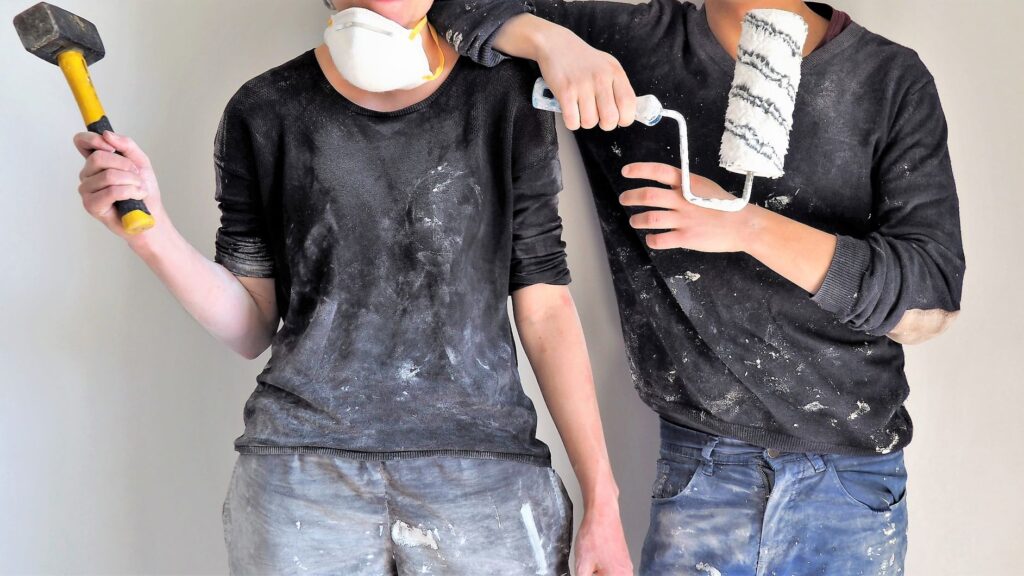How To Paint A Wall Like A Pro

So you’ve made the decision to give some much needed love to your walls. You’ve picked the paint, and you’ve obtained the supplies. Awesome! Next step: actually doing it. If you’re a bit of a stranger to craft of painting, but you don’t want to shell out the dough to have professionals take on the task, we have some tips and trips to help you paint those walls like a pro and achieve a polished look when all is done. Let’s get to it!
Cover Anything You Don’t Want Paint On
Before you crack open those paint cans, make sure you take precautions to protect the floors and furniture from inevitable paint splatters. If you can, remove the furniture from the room. If that’s not an option, move the furniture to the middle of the room and cover with a drop cloth. Cover the floors with drop cloths as well to avoid hard-to-remove paint splatter on carpets or hardwoods.
Prep The Walls
If your walls have seen better days, it’s likely they could use a little spackle love. Cover holes, nicks, and dents with spackle. But be sure to sand the spackle down once fully dried for a smooth finish! You’d be surprised how often this step is skipped. Opt for a fine grit sandpaper here.
Wipe down your walls with a damp cloth to ensure there’s no dust or debris that could cause an inconsistent paint finish.
Also take this time to remove outlet covers. Again, you’d be surprised how often this does not happen. Paint splatter on electrical outlets or paint build-up along the edges of outlets is a dead giveaway of a DIY paint job. So take a few minutes to unscrew those babies and store them in a place far away from the paint.
If you plan to use painter’s tape, now would be the time to apply it. But be careful, if not applied diligently, paint can make it’s way through tiny crevices in the tape, leaving you with a worse edge than if you’d done it by hand. Whether or not to use painter’s tape is a personal preference, but if used properly can leave a clean edge.
Cut In The Walls And Ceiling
Before picking up a paint roller, use a brush and a steady hand to trim the edges of the walls: along the baseboards, corners, ceiling, windows/doorframes, and outlets. Paint about a 1.5 – 2 inch line to prevent you from having to get too close to the ceiling or woodwork with a roller. An angled brush will help you maintain consistent control over the line you paint. Painter’s tape is an option for this step as well, but again, apply carefully.
Use The “W” Technique While Painting With A Roller
Once you’ve got all the edges cut in with your paintbrush, it’s time to switch over to the roller. To avoid streaks or lines in the finished paint, roll your paint in an overlapping “W” pattern. And keep that roller loaded with a consistent amount of paint to aid in an even paint application. You’ll know it’s time time to refuel that roller if you find yourself pressing down hard as you roll in order to get the amount of paint coverage you’d like.
Be Ready To Apply A Second Coat
Once your first coat of paint dries, you’ll likely find spots where that old paint color is peaking through, so be prepared to go in with a second coat of paint to polish off those walls before considering it a finished job. A thin paint layer is another telltale sign of a DIY paint job. If you prepped your walls with a primer before painting, you may not need a second coat, but that’s not always the case. So before you remove the drop cloths from the furniture and pack up the paint, do an inspection to see if a second coat would benefit you.
Good luck, and have fun with your painting endeavors!
Have more home renovation needs? CBM Mart is here for that.


-800x600.jpg)

